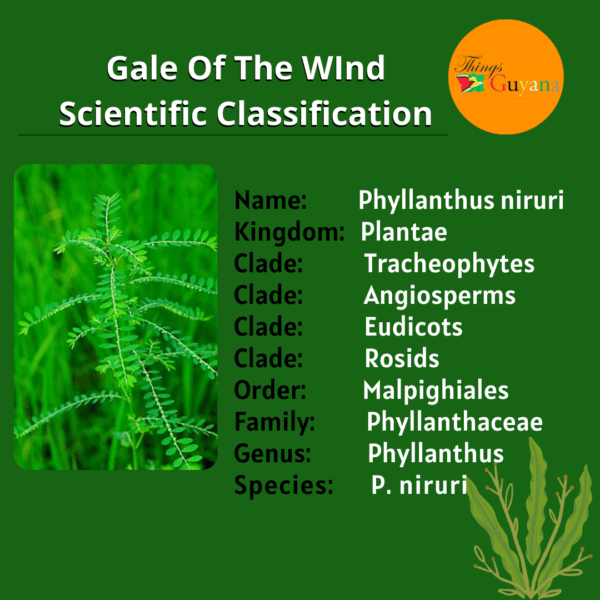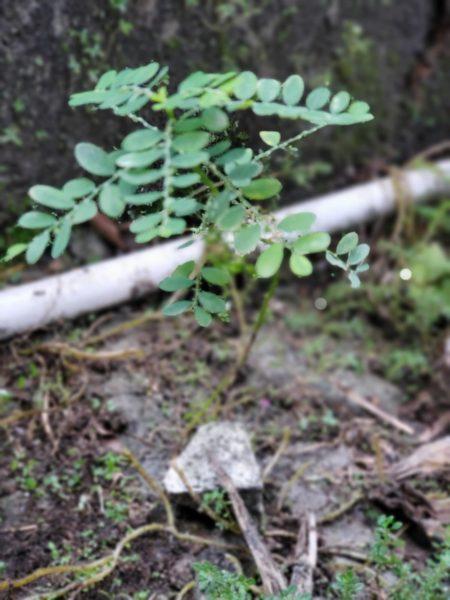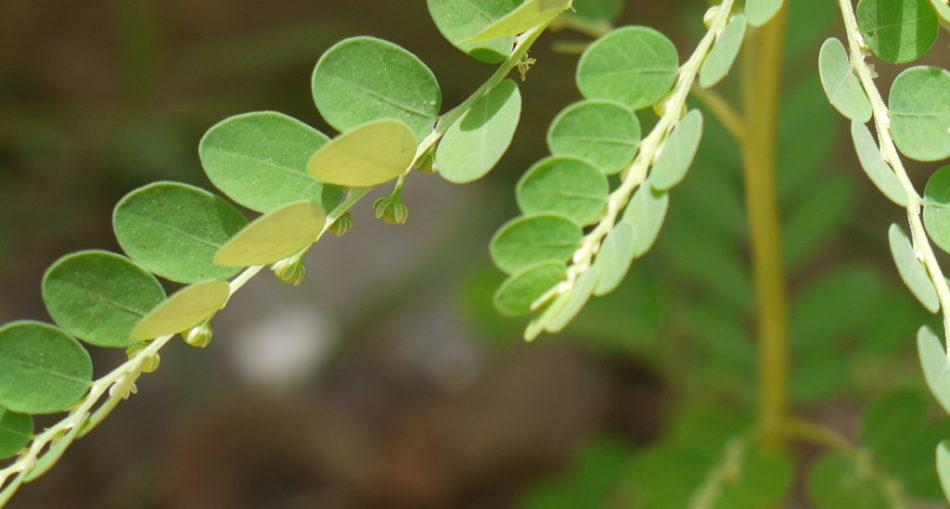This common fern-like weed can be seen growing in many places, especially from the cracks in concrete, hence its name ‘stone breaker. The Gale of the wind might seem like an unseemingly useful plant, however, it has been used in traditional medicine for centuries.

Origins
Making herbal tea from various plant leaves is a popular method of treating ailments in ancient history. Gale of the wind has been used as a herbal tea in Ayurveda which is a natural system of medicine, that originated in India more than 3,000 years ago. The term Ayurveda is derived from the Sanskrit words Ayur (life) and Veda (science or knowledge). It is believed that in order to purify the body it must start from within.
Description
It can grow between 50–70 cm (20–28 in) tall and bears ascending, decorative branches. The bark is smooth and light green. It bears fern-like, pale green flowers which are often flushed with red. The fruits are tiny, smooth pockets that contain seeds.
Habitat

Photo of Gale of the wind growing out from the stone. Photo Credits: Danielle Persaud
Phyllanthus niruri is indigenous to tropical and subtropical areas in both hemispheres. It is prevalent in the rainforests of the Amazon, China, Southern India, the Philippines, the Bahamas, and Puerto Rico. Some of Stonebreaker’s relatives can even be found in Florida and Texas. Phyllanthus niruri is quite widespread within tropical rainforests like the Amazon where it grows and spreads much like a weed. Due to this weed-like growth, the Stonebreaker is often found growing abundantly in cultivated fields as well as wastelands.
Adaptations
The gale of the wind has greatly adapted to its tropical habitat in the rainforest. The leaves of the plant are shaped in a way, that points downwards which allows water to drip off the tip of the leaves quickly. An excess of water can cause fungal and bacterial infections so it is important for them to have a way to get rid of any superabundance of water.
The gale of the wind is also known as ‘stone breaker’ due to its incredibly strong roots which have adapted to anchor itself into the ground to prevent it from being washed away. These strong roots can also be able to burrow deep into the soil to find water.
Medical Uses
Like many plants, the gale of the wind has been widely used in folk medicine to treat various types of illnesses. The research that has been done to support these benefits is limited but there are still some that suggest that the plant can be used for:
- Treating Kidney Stones – although there is not enough research to back up this claim there has been promising data gathered which stated that kidney stones can be reduced in size by consuming gale of the wind. I guess that’s another reason it can be called ‘stone breaker.
- Treating Liver Damage – A protein that is found in this plant has been tested in healing mice with liver damage. The isolated protein stimulates the repair of the liver. It is a well-known hepatoprotective herbal plant.
- Helping With Inflammation – The plant can also be used as a treatment for mild skin inflammation.
- Diabetes – Extracts from the plant have been shown to lower blood sugar levels in participants and prevent any spikes in blood sugar.
- Tumor treatment – It can also aid in the aid of cancer treatment by delaying the onset of tumors.
Note: The research that has been carried out on this plant has also shown that it can be toxic to internal organs if it is consumed in excessive amounts.
Fun fact – Among all of the various health benefits, it is widely used in the treatment of kidney stones.
How To Make Gale Of The Wind Tea
Just like any type of herbal tea, it is made using the dried leaves of the plant. It is quite easy to prepare
Ingredients:
- 1 tbsp dried gale of the wind leaves
- 3 cups of water
- 1 tsp of honey or sugar
- 1 tsp lemon (optional)
- 1 tsp milk (optional)
Preparation
- Add 3 cups of water to a pot and bring it to a boil.
- Use an infuser filled with dried leaves and add to boiling water.
- Strain the leaves into a teacup
- Add your milk and sugar/ honey and serve while hot!
Note: if you are consuming the tea for its medicinal properties relating to kidney stones then it is advised that you drink about two cups a day.
Check out this link if you are interested in purchasing the dried leaves – https://www.amazon.com/LIFETONE-Chanca-Piedra-Phyllanthus-Teabags/dp/B07R9L8KCT
References:
- http://bioweb.uwlax.edu/bio203/2011/zwernik_samu/adaptation.htm
- https://www.medicalnewstoday.com/articles/phyllanthus-niruri
- https://www.hopkinsmedicine.org/health/wellness-and-prevention/ayurveda







